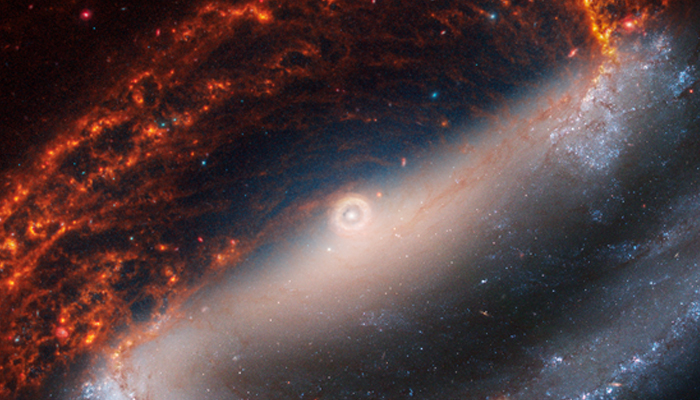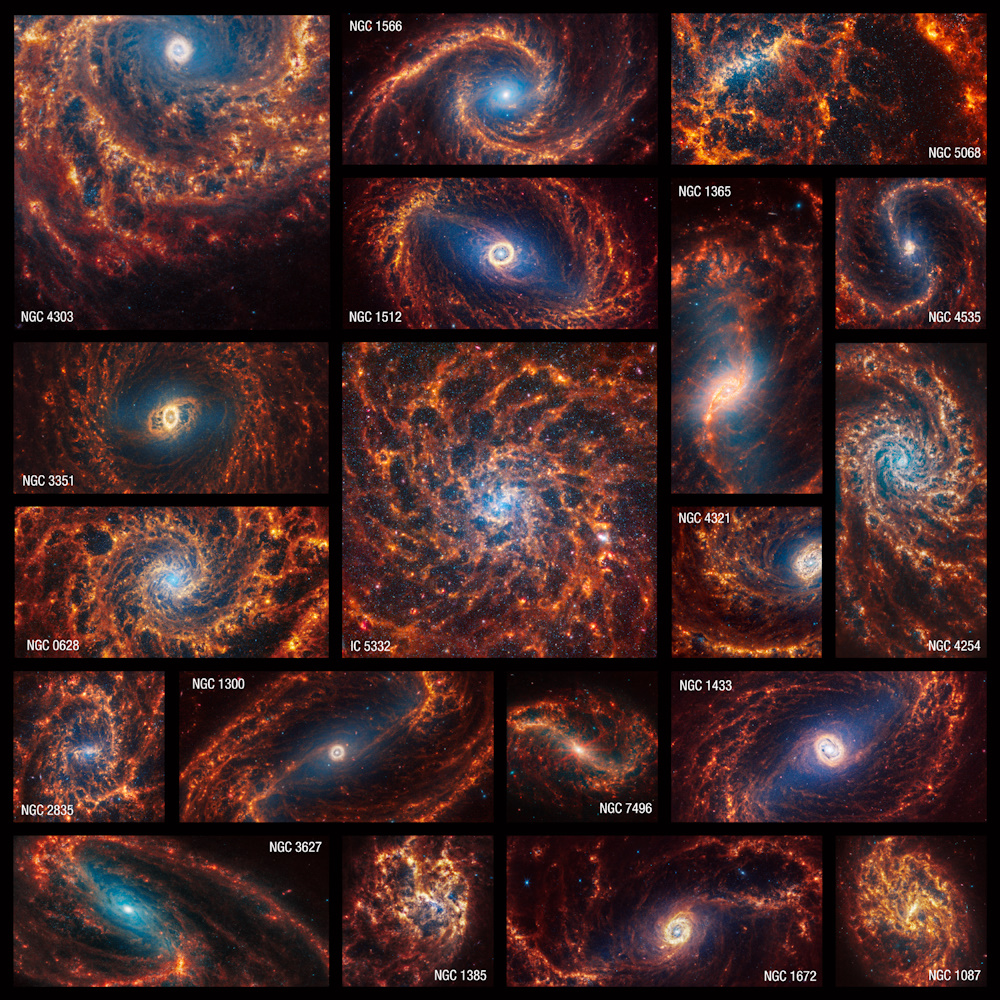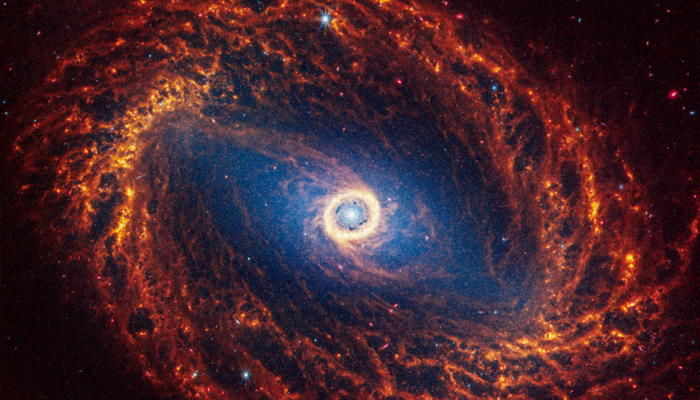With the recently revealed images of 19 spiralling galaxies, scientists have been able to delve further into the development and origins of stars thanks to NASA’s amazing James Webb Space Telescope.
The photographs were captured from the Milky Way, a nearby galaxy.
NGC1365 is the name of the far-off galaxy seen in the detailed images. It is located about 60 million light-years away from Earth. NGC5068 is the closest one, located roughly 15 million light-years away.
In 2021, the amazing James Webb Space Telescope was launched into space. It started doing business in 2022. The information it returned to Earth changed human knowledge of the universe’s origins significantly and made it possible for scientists to find answers to issues that had previously been unknown

Spiralling galaxies, like the Milky Way, are frequently observed and caught.
Leading the team’s data processing on the photos was astronomer Thomas Williams from the University of Oxford. He stated: “These data are important as they give us a new view on the earliest phase of star formation.”
According to Williams, dusty clouds where stars are born completely block out visible wavelengths of light, but these clouds flare up at JWST wavelengths.

Understanding how stars in galaxies begin their lives will be greatly aided by these data, as we don’t really know much about this period or even how long it lasts.
Additionally, the scientist said, “It is widely believed that galaxies form from the inside out, which is how they get bigger and bigger over the course of their existence. The bars and spiral arms work together to direct the gas that will eventually form stars towards the galaxy’s centre black hole.”
With the help of these images, scientists were able to provide a detailed response to the question of what makes up the structure of the gas and dust clouds, which are the primordial soup from which stars and plants develop.
“The images are not only aesthetically stunning, they tell a story about the cycle of star formation and feedback, which is the energy and momentum released by young stars into the space between stars,” said Janice Lee, a principal investigator and astronomer at the Space Telescope Science Institute in Baltimore.

“On both cluster and kiloparsec (roughly 3,000 light years) scales, it appears that there was explosive activity and clearing of the dust and gas,” Lee continued. Even the general public can clearly see and understand the dynamic process of the entire star creation cycle, which adds to the images’ fascinating qualities on many levels.”
Astronomer Erik Rosolowsky of the University of Alberta stated, “Using Hubble, we would see the starlight from galaxies, but some of the light was blocked by the dust of galaxies.” He continued, “this limitation made it hard to understand parts of how a galaxy operates as a system.”
“With Webb’s view in the infrared, we can see through this dust to see stars behind and within the enshrouding dust.”





